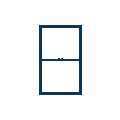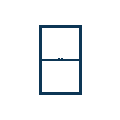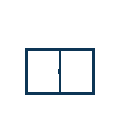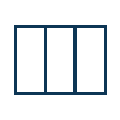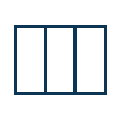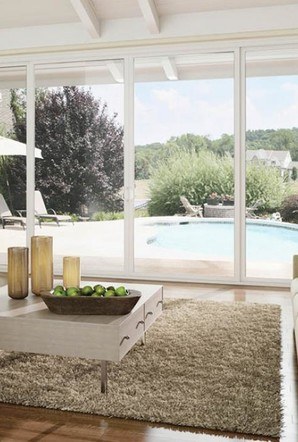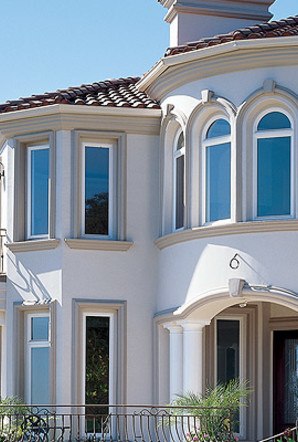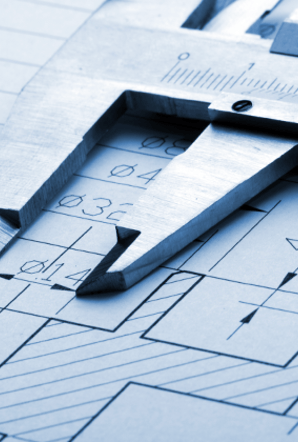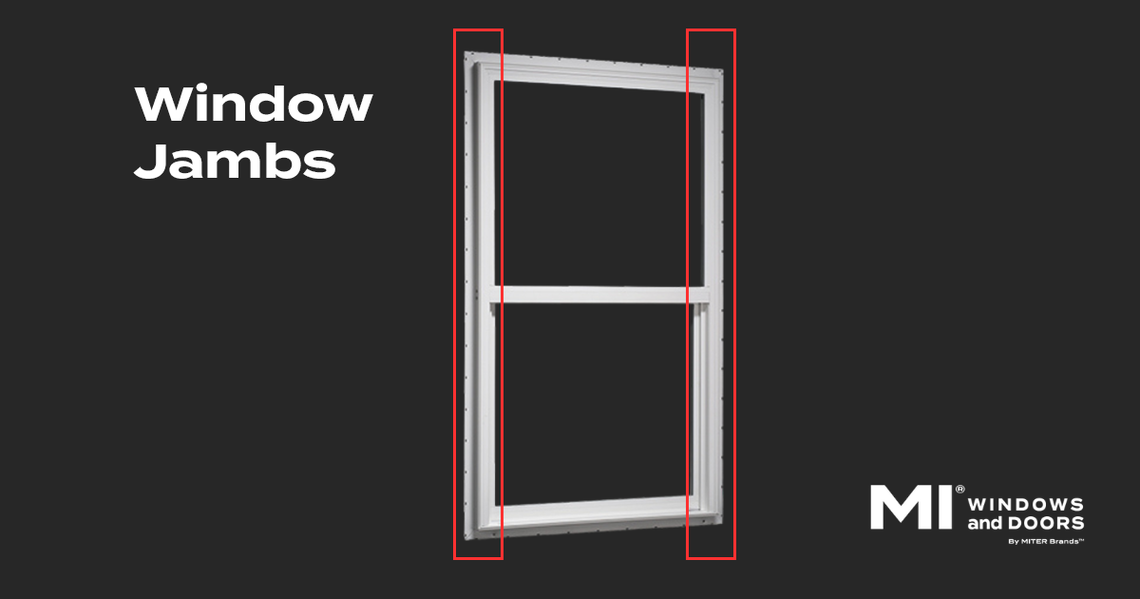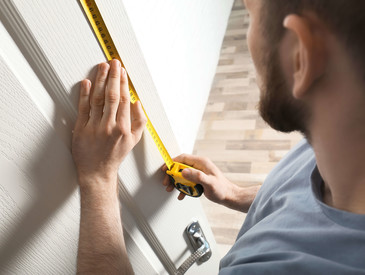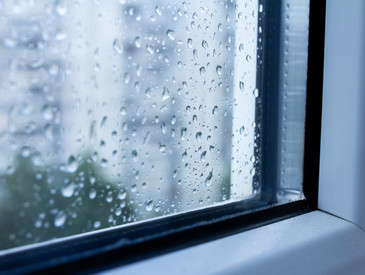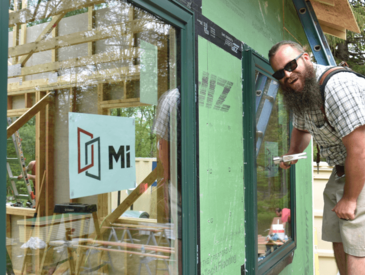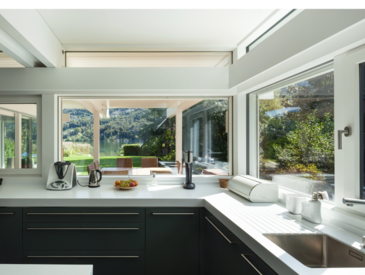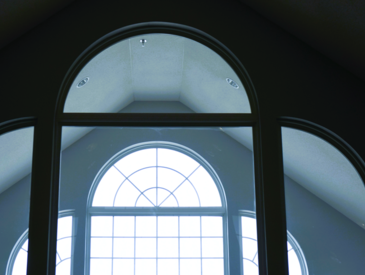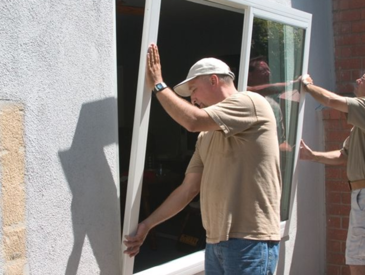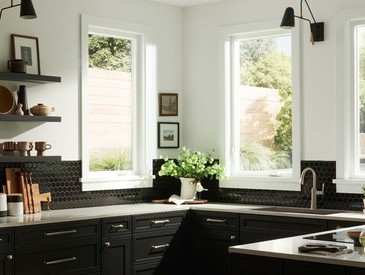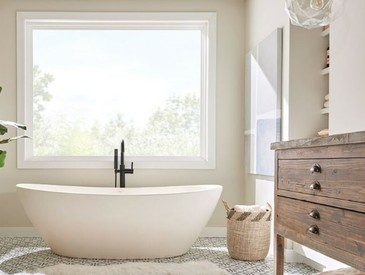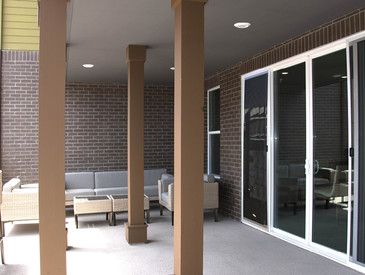When it comes to windows, there’s more than meets the eye. Beyond the glass and frame, there are several essential parts that contribute to a window’s functionality and aesthetic appeal. One such key component is the window jamb.
In this article we’ll cover everything you need to know about modern window jambs, including how they contribute to a window’s functionality, how to measure them for replacement, and how to maintain them to ensure their longevity. By the time we’re done, you’ll be ready to make confident decisions about purchasing, repairing, and replacing your window jambs.
What is a window jamb?
Window jambs provide the structural integrity of your window, making sure it stays secure and properly aligned. There are two types of window jambs:
- Window side jambs: These are the vertical parts that form the sides of a window frame.
- Window head jamb: This is the horizontal part that runs along the top of the window frame.
Window jambs include mechanisms like tracks or rails that enable windows to open and close by sliding vertically or horizontally. They also support latches, hinges, deadbolts, and hardware for locking the window and keeping your home secure.
What’s the Difference Between a Window Jamb and a Frame?
While the terms “jamb” and “frame” are often used interchangeably, they’re actually distinct. The window frame is the complete structure that surrounds and supports the entire window system and holds the glass pane in place. It includes the head (top), sill (bottom), and jambs (sides) of the window.
The window jamb specifically refers to the vertical and top sides of the frame. Understanding this nuance is important, especially when discussing repairs or replacements with a professional, to ensure that you’re referring to the correct part of the window.
What’s the Difference Between a Window Jamb and a Mullion?
Another part commonly confused with the window jamb is the mullion, Mullions are the vertical bars between two windows or doors that divide and connect the windows. Unlike jambs, which are part of the actual window frame, mullions are sometimes added for aesthetic appeal to add multiple smaller windows into a single opening. Mullions may also be required to provide structural support in complex configurations.
What are window jamb extensions?
Jamb extensions are additional interior window components added to the depth of a standard window jamb to accommodate thicker walls. They’re used to ensure a proper fit when a home’s walls are thicker than what standard window frames typically accommodate.
Jamb extensions enhance efficiency by filling the gap between the window frame and the interior wall, providing a seamless fit and a finished look, and ultimately ensuring proper window installation. They can be made of various materials including vinyl, wood, and composite, though vinyl window jamb extensions are the most durable and moisture-resistant.
What are window jamb inserts?
Window jamb inserts, also known as liners, are used to refurbish or replace a window’s existing jambs without having to remove the entire window frame. Positioned inside the jamb on the vertical sides, liners provide a new surface for the window to operate against.
Jamb inserts also offer an additional layer to secure the window, while sealing gaps and improving energy efficiency. As such, window jamb liner replacements are an economical option for improving the functionality of old windows, as opposed to the cost of completely replacing your windows.
Why are window jambs important?
Most homeowners may not know it, but window jambs are actually a key component of a window, for several reasons:
- Structural support: They help support the weight of the window and ensure that it remains securely in place.
- Alignment: They ensure that the window operates smoothly and fits snugly within the frame.
- Energy efficiency: Well-fitted jambs make for better insulation, reducing drafts and leaks and improving a window’s overall energy efficiency.
- Aesthetic finish: Jambs give that finished look to an installed window, enhancing its overall appearance.
Installing Window Jambs to Improve Energy Efficiency
Since window jambs play such an important role in enhancing a window’s energy efficiency, proper installation is key. Doing so will prevent air and water leaks, the usual suspects when it comes to energy loss. Here are some more tips for maximizing your windows’ efficiency:
- Caulking: Applying caulk around your window jambs will help seal cracks or gaps and prevent airflow.
- Weather-stripping: Installing weather-stripping around the moveable parts of your window will help minimize drafts and leaks.
- Jamb liners: As we mentioned earlier, liners provide an extra layer inside the window jamb, sealing gaps and further improving your window’s efficiency.
- Window films: Low-emissivity (Low-E) window coatings help reduce heat transfer and loss.
How to measure a window jamb
Accurately measuring window jambs is important when replacing them, fitting jamb liners for the first time, or ordering window jamb liner replacements. Here’s a simple guide for precise measurement:
- Width: Extend your tape measure horizontally between the left and right jambs at the top of the window and measure the distance between the two.
- Height: Extend your tape measure vertically from the bottom to the top of each jamb and measure the distance.
- Depth: Open the window and measure the sill space from the front to the back of the jamb, including any part of the wall it sits within.
What Are Standard Window Jamb Sizes?
Window jamb size can vary depending on the window, though standard sizes typically range from 3 1/4 inches to 4 9/16 inches in depth. Again, be sure to measure your window jambs precisely to ensure a proper fit for replacement windows or jamb liners.
Pro maintenance tips for window jambs
Properly maintaining window jambs is important to ensure the longevity and functionality of your windows. Regular care will help prevent issues like drafts, sticking windows, and structural damage, and will also save you time and money in the long run. Here are some practical tips to keep your jambs in tip-top condition.
- Regular cleaning: Dirt and debris can accumulate in the window jambs, leading to operational issues and potential damage. Make sure to clean your jambs regularly using a soft brush or vacuum to remove dust and debris. For a deeper clean, you can use a mild detergent and warm water, wiping down the jambs with a soft cloth.
- Inspect regularly for damage: Periodically inspect your window jambs for signs of damage, such as cracks, warping, or rot. If you notice issues, be sure to address them promptly to prevent further deterioration. Small cracks can be filled, though more significant damage may require repair or even replacement.
- Lubricate moving parts: If your windows are difficult to open and close, the jambs may need lubrication. Use a silicone-based lubricant on the tracks and moving parts of the window jamb. (Try to avoid oil-based lubricants, since they can attract dirt and cause other problems.) Lubricate jambs at least once a year, or whenever a window’s operation feels stiff.
- Check and replace weatherstripping: Weatherstripping helps seal the window and prevent drafts, but it can wear down over time. Inspect the weatherstripping around your window jambs for signs of wear or damage, and replace if necessary.
- Ensure proper drainage: Check the weep holes in your window frame regularly to be sure they are clear and unobstructed. These holes help direct water away from the window, preventing moisture buildup and potential damage to the jambs resulting from mold and mildew growth. If you do see signs of damage, clean immediately with a solution of water and white vinegar.
- Professional inspection: Consider having a certified professional like MI Windows and Doors inspect your windows and jambs periodically. They can identify issues you may have missed, provide expert care and maintenance, and help keep your windows in optimal condition.
Transform your home with expert window solutions
Choosing the right windows for your home involves considering several factors, including style, material, energy efficiency, and cost. When selecting windows, be sure that the jambs are suitable to your specific needs. Remember, properly fitted window jambs will enhance the functionality and appearance of your windows and contribute to a comfortable, secure, and aesthetically pleasing home.
Ready to upgrade your windows or need expert advice on window jambs? MI Certified Dealers offer personalized service to help you find the perfect window solution for your home. Get a quote today to find out how MI can help you improve your home’s windows.
